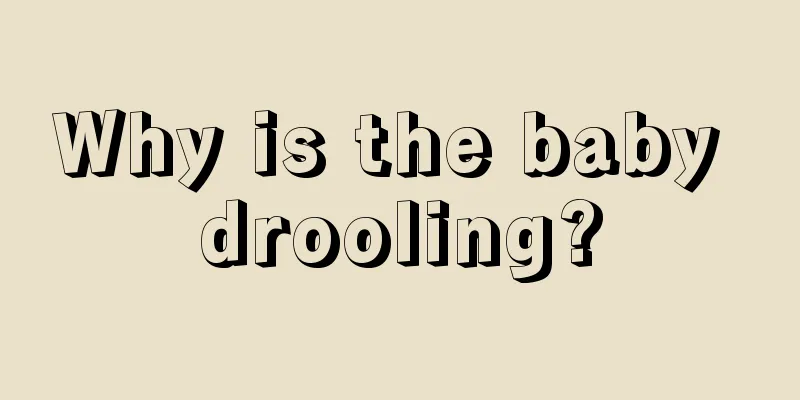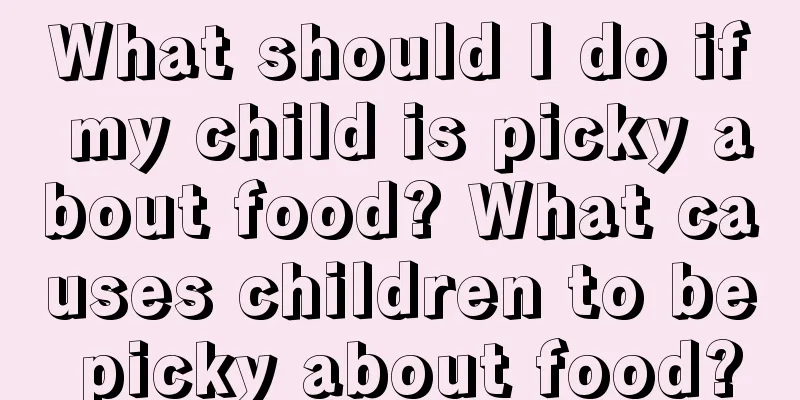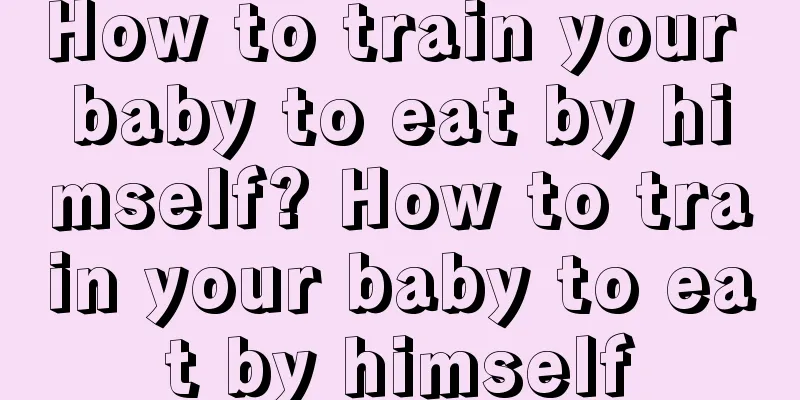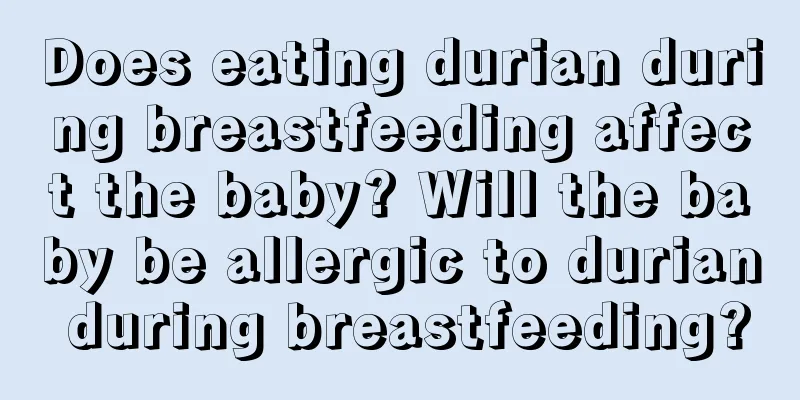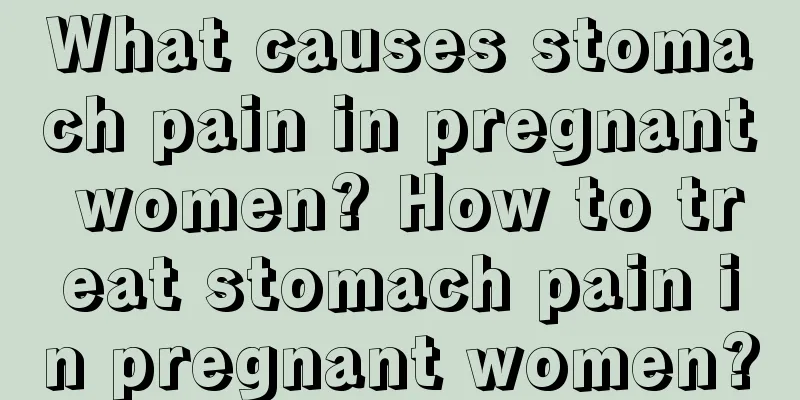What should I do if my baby has a fever? Why does my baby have red spots on his body?

|
We all know that pregnant women and newborn babies are very fragile. The treatment methods we use when we are sick may not be the same as theirs. So what should we do if the baby has a fever? Why does the baby have red spots on his body? What to do if your baby has a fever1. Wipe with warm water or take a warm bath: Wipe the child's head, armpits, limbs with a warm and wet towel or take a warm bath, scrub the skin more to promote heat dissipation. 2. Foot soaking can promote blood circulation, relieve discomfort, and reduce the baby's body temperature. You can use a basin or a small bucket to soak your feet. Pour 2/3 of the basin with water. The water temperature should be slightly higher than usual, and the baby should be able to adapt to it. When soaking the feet, the mother can rub the baby's two little feet, which can not only dilate the blood vessels, but also relieve the discomfort caused by fever. 3. Ice compress: You can use ice compress in small amounts and apply ice or cold compress to the baby's head or large blood vessels. But be sure to wrap a layer of cloth around the ice bag to prevent local frostbite on the baby's skin, and babies under 6 months old should not be iced. There is still much controversy about the pros and cons of this method. It is generally believed that ice compresses do more harm than good, because ice compresses may cause the capillaries in the baby's skin to contract, hinder heat dissipation, and increase the body temperature, especially when accompanied by chills and shivering. Ice compresses should not be used. 4. Apply wet compress with a warm towel. Wipe the baby's limbs with a warm towel, or apply a wet towel to the forehead to help reduce fever. 5. For medication to reduce fever, generally choose cooling patches or cooling suppositories. You can also choose oral solution or granule dosage forms. For infants under 1 year old, it is best to use drops because the drug concentration in drops is low and the irritation is less. 6. Feed the baby with water repeatedly and let the baby rest in bed as much as possible. While taking the above-mentioned antipyretic measures for children with fever, you should closely observe the baby's other conditions, such as whether he has a cough, mental state, etc. If the temperature is too high, go to the hospital for treatment. Why do babies have red spots?Baby eczema Commonly known as milk ringworm, it is a common allergic skin inflammation caused by internal and external factors. It is most common in 1 to 3 months, gradually alleviates after 6 months, and most of them heal themselves after 1 year old. Characteristics of eczema: Redness, dryness, scaling, and obvious itching may occur. In severe cases, there may be small cracks and even water seepage, hard scabs, and slight redness and swelling. It mainly occurs on the face and in severe cases reaches the chest, back and limbs. Eczema itself is not harmful, but it is easy to cause infection if scratched and affects the appearance. Heat rash This is commonly known as prickly heat. In a hot and humid environment (not just in summer), sweat stays on the skin surface and is not easy to evaporate after sweating, which irritates the skin and causes heat rash. If the heat rash is not controlled and becomes serious, secondary infection will form pustular rash. Characteristics of heat rash: After exposure to heat, dense granular papules appear, and there is mild desquamation after the rash subsides. Sometimes there are needle-sized round and pointed superficial blisters or pustules. Heat rash in infants and young children is common on the head, face, neck, trunk, etc. Heat rash is a raised area on the skin surface and feels grainy to the touch. Treatment of heat rash: The baby has large areas of heat rash, which is probably related to the fact that he wears too many clothes on a daily basis. To put it bluntly, it is caused by being covered up. First of all, you need to strengthen care, never let your baby get hot again, wipe and clean with clean water in time after sweating, and then apply water-based moisturizer or liquid prickly heat water (do not use prickly heat powder); If the heat rash is severe, you can apply some astringent and anti-inflammatory drugs (such as calamine lotion) externally, and be careful not to let your baby scratch the skin. What are diaper rash and roseola infantum?Diaper rash It refers to the redness of the skin near the anus, buttocks, perineum, etc. of the newborn, with scattered maculopapular rashes or herpes, also known as the newborn's red buttocks, which is what everyone calls a red buttocks. Causes: ① Dampness, diapers not changed in time; ② Friction, diapers rubbing against the skin. ③ After adding complementary foods, the composition of feces changes, causing the baby's buttocks skin to adapt. Characteristics of diaper rash: The main affected areas are the buttocks and inner thighs; the skin is rough, red, swollen, hot, rough or spotted. In severe cases, there are skin lesions such as macules, papules and small pustules, accompanied by exudation and abrasions; the baby cries because of the itching and discomfort. Roseola infantum Also known as roseola infantum, it is a common acute febrile rash disease in infants and young children. The peak age for roseola infantum is 6 months to 2 years old. Characteristics of pediatric emergency department: After the child has had a fever for 3 to 5 days, the fever suddenly drops and a rose-red maculopapular rash appears on the skin. The diameter varies from 2 to 5 mm and fades when pressed. The rash usually occurs first on the face, neck and trunk, and then gradually spreads to the proximal limbs. Pediatric emergency is very similar to prickly heat. To distinguish it from prickly heat, you only need to see whether the baby has a fever for more than 3 days before the rash appears. Treatment of roseola infantum: No treatment is needed, and it will disappear naturally after about 3 days. When diagnosing, it is important to remember that the rash appears immediately after the fever subsides after a high fever lasts for more than 3 days, which is also called "fever rash". What are hives and baby acne?Urticaria Commonly known as urticaria, it is also called wheal. It is a localized edema reaction caused by the dilation and increased permeability of small blood vessels in the skin and mucous membranes. It usually disappears within 2 to 24 hours, and sometimes new rashes will recur. The cause of urticaria is complex. About 3/4 of patients cannot find the cause, which is related to allergies. Characteristics of urticaria: The skin often itches first, and wheals appear after scratching. The wheals vary in size and shape, are raised above the skin with unclear boundaries, and gradually spread and merge into patches. They usually last for several minutes to several hours, and leave no trace after they subside. Treatment of urticaria: If the symptoms of occasional urticaria are mild, generally no treatment is required. If the situation is serious, it is recommended to seek medical attention immediately; If urticaria recurs, it is best to find out the allergens and go to the hospital for allergen testing. Baby acne Neonatal acne is generally the most common. The reason is that the level of maternal hormones transmitted to the baby through the placenta during the fetal period begins to decrease. As the estrogen level in the baby's body decreases, small pimple-like acne will break out on the skin. Characteristics of baby acne: It occurs within a few days to 4 weeks after birth, mainly on the cheeks, forehead and chin, mainly papules and pustules, occasionally blackheads, and rarely nodules and cysts. Papules, pustules and blackheads usually disappear within a few weeks. Treatment of baby acne: As the disease grows, it will generally disappear on its own and no treatment is needed. However, you should strengthen care and be careful not to cover it with heat. |
<<: What causes a baby's stuffy nose? What should I do if my baby spits up milk due to a cold?
Recommend
Can children's rhinitis be cured? Can children's rhinitis be treated with nebulization?
Rhinitis is a respiratory disease that is quite c...
What are the symptoms of calcium deficiency in children? What foods can children eat to supplement calcium the fastest?
We all know that calcium is very important to our...
What can't babies under one year old eat? Common foods such as soy sauce are not allowed
Parents with babies at home know that after six m...
Symptoms of infant flatulence and treatment of flatulence in infants
It is normal for babies to have flatulence. Becau...
What preparations do mothers who want to have a second child need to make?
The two-child policy has been implemented in my c...
Why does the baby have a fever? Why does the baby have a fever?
The immune system of young children is not fully ...
Will sex hurt after giving birth? Will women's sexual desire increase after giving birth?
After giving birth, a woman's body has been t...
What should I eat to replenish my energy during a normal birth? Can I eat during childbirth?
Many people feel particularly nervous and painful...
How should pregnant women eat eggs so that they are easier to absorb? Pregnant women should not eat too many eggs
Eggs are a kind of food that everyone likes to ea...
The most effective way to reduce belly fat after childbirth What to eat to reduce belly fat after childbirth
A firm, flat and curvy belly is what all girls wa...
Should children's teeth be thrown away? What should children's teeth be filled with?
Children will start to replace their teeth at a c...
How many internal examinations should be done before giving birth? What other embarrassing examinations are there before giving birth?
Prenatal checkups are normal for expectant mother...
Can I eat glutinous rice balls during the confinement period? Precautions for pregnant women to eat glutinous rice balls
Tangyuan is a very traditional snack in our count...
Can pregnant women with constipation take probiotics? Tips for pregnant women with constipation
Many pregnant mothers will encounter constipation...
Can baby rice cereal cause allergies? Can baby rice cereal cause constipation?
Many mothers know that babies need to eat complem...

